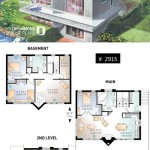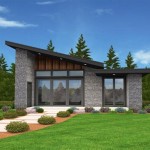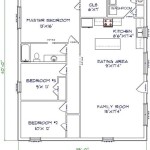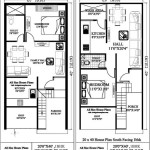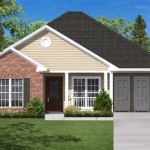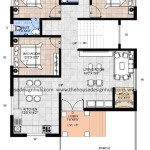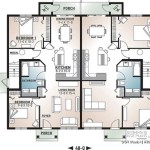House Plans With Sports Court: Integrating Athletic Activity into Residential Design
The integration of a sports court into residential house plans represents a significant shift in contemporary home design. More than just an amenity, a sports court fosters an active lifestyle, provides recreational opportunities for families, and even increases property value. This article explores the various aspects of incorporating a sports court into house plans, covering design considerations, types of courts available, planning permissions, cost implications, and the overall advantages of having such a facility within a residential setting.
Types of Sports Courts for Residential Properties
The initial step in incorporating a sports court involves determining which type of court best suits the homeowner's needs and available space. Several options exist, each catering to different sports and spatial requirements. Understanding the characteristics of each type is crucial for making informed decisions.
A full-sized basketball court is the most expansive option, typically requiring a substantial amount of land. These courts replicate the official dimensions used in professional basketball, offering a comprehensive playing experience. However, they are not feasible for properties with limited space. Consideration must be given to the run-off area surrounding the court, ensuring player safety and preventing collisions with surrounding structures or landscaping.
Multi-sport courts, also known as "sport courts," are a versatile alternative. These courts are designed to accommodate a variety of sports, including basketball, volleyball, tennis, and badminton. The playing surface is typically marked with different lines for each sport, allowing for flexibility and adaptability. Multi-sport courts often adopt a smaller footprint compared to dedicated basketball courts, making them suitable for moderately sized properties. The surface material of a multi-sport court is usually a durable, all-weather material designed to withstand repeated use and varied weather conditions.
Tennis courts demand a significant amount of space, both for the playing surface and the surrounding run-off area. The court dimensions are strictly regulated, requiring careful planning to meet official standards. Tennis court surfaces can vary, including clay, grass, and hard courts. Each surface type offers a different playing experience and requires specific maintenance procedures. Grass courts, for example, require regular mowing and watering, while hard courts may need occasional resurfacing.
Pickleball courts, a relatively recent addition to the residential sports court landscape, are smaller than tennis courts and require less space. Pickleball is rapidly gaining popularity due to its ease of learning and accessibility for players of all ages and skill levels. The smaller court size makes it a viable option for properties where a full-sized tennis court is not feasible. The playing surface is typically a hard court material, similar to that used for tennis or basketball.
Finally, smaller facilities designed for practicing a specific skill, such as a batting cage for baseball or softball, or a putting green for golf, can be integrated into residential properties. These options require significantly less space than full-sized courts and can be tailored to the homeowner's particular interests. Batting cages usually consist of a net enclosure and a designated hitting area, while putting greens can be designed with varying levels of complexity, including sand traps and undulations.
Design Considerations for Sports Court Integration
Integrating a sports court into a house plan demands careful consideration of several design elements. Beyond the type of court selected, factors such as orientation, surfacing, lighting, fencing, and landscaping all play a crucial role in creating a functional and aesthetically pleasing space.
Orientation is paramount. Ideally, the court should be positioned to minimize glare from the sun, particularly during peak playing hours. An east-west orientation is often preferred, as it reduces the amount of direct sunlight shining into players' eyes. The placement of the court should also take into account prevailing wind patterns, as strong winds can disrupt gameplay, especially for sports like tennis and badminton.
Surfacing materials are critical to player safety and performance. Common options include asphalt, concrete, acrylic coatings, and synthetic turf. Asphalt and concrete are durable and relatively inexpensive, but they can be hard on joints. Acrylic coatings provide a more cushioned surface and can be customized with different colors and textures. Synthetic turf offers excellent shock absorption and is particularly well-suited for multi-sport courts.
Lighting is essential for evening play. Adequate lighting ensures visibility and safety, allowing for extended use of the court. LED lighting is becoming increasingly popular due to its energy efficiency and long lifespan. The lighting design should minimize glare and provide even illumination across the entire playing surface. Consideration must be given to light pollution, directing light downwards and away from neighboring properties.
Fencing serves multiple purposes. It provides a barrier to contain balls within the court, preventing them from straying into neighboring properties or landscaping. Fencing also enhances safety by preventing unauthorized access to the court. The height and material of the fencing should be appropriate for the sports being played. For tennis courts, taller fences are typically required to prevent balls from escaping during serves and volleys.
Landscaping can enhance the aesthetics of the sports court area and provide a buffer between the court and surrounding structures. Trees and shrubs can help to screen the court from view, creating a more private and secluded space. Landscaping can also help to absorb noise and reduce the impact of the court on the surrounding environment. Drought-tolerant plants are often preferred, as they require less maintenance and conserve water.
Planning Permissions, Cost Implications, and Benefits
Before embarking on a sports court project, it is essential to investigate local planning regulations and obtain the necessary permits. Building codes and zoning ordinances may dictate the size, location, and design of the court. In some cases, environmental impact assessments may be required, particularly if the project involves significant excavation or alteration of the landscape. Failure to comply with local regulations can result in fines, delays, and even the removal of the court.
The cost of constructing a sports court can vary widely depending on the type of court, the size, the materials used, and the complexity of the design. Basic asphalt or concrete courts can be relatively inexpensive, while more elaborate courts with synthetic turf, premium lighting, and custom fencing can be significantly more expensive. Site preparation, including grading and excavation, can also add to the overall cost. Ongoing maintenance costs should also be considered, including cleaning, resurfacing, and repairs.
Despite the initial investment, a sports court can provide numerous benefits to homeowners. It promotes an active and healthy lifestyle, providing a convenient outlet for exercise and recreation. It offers a space for families to bond and spend quality time together. It can enhance the social life of the homeowner, providing a venue for hosting gatherings and friendly competitions. Furthermore, a well-designed and maintained sports court can significantly increase property value, making it a worthwhile investment in the long term.
In addition to the physical and social benefits, a sports court can also offer therapeutic advantages. Engaging in sports and physical activity can reduce stress, improve mood, and enhance cognitive function. A sports court can provide a private and accessible space for individuals to de-stress and recharge after a long day. For children and teenagers, a sports court can provide a healthy alternative to screen time and promote the development of physical skills and teamwork.
Integrating a sports court requires careful planning and execution. However, the rewards of having a private athletic facility within a residential setting are considerable, providing a lifetime of enjoyment, health benefits, and increased property value.

Luxurious Craftsman House Plan With Optional Sports Court 290000iy Architectural Designs Plans

5 Bedroom Craftsman House Plan Luxury Design 135 1036 Indoor Basketball Court Floor Plans Home

New American House Plan With Sport Court And Angled Garage 22575dr Architectural Designs Plans

Craftsman Style House Plan 5 Beds 3 Baths 7099 Sq Ft 117 699 Indoor Basketball Court Flooring

House Plans With Indoor Basketball Court How To Costs

Craftsman House Plan With Sports Court 14625rk Architectural Designs Plans

Craftsman Style House Plan 6 Beds 5 Baths 6679 Sq Ft 920 24 Plans Indoor Basketball Court

House Plans With Indoor Basketball Court How To Costs

Exclusive New American House Plan With Indoor Basketball Court 73405hs Architectural Designs Plans

House 3 Story Craftsman With Sport Court Plan Green Builder Plans

